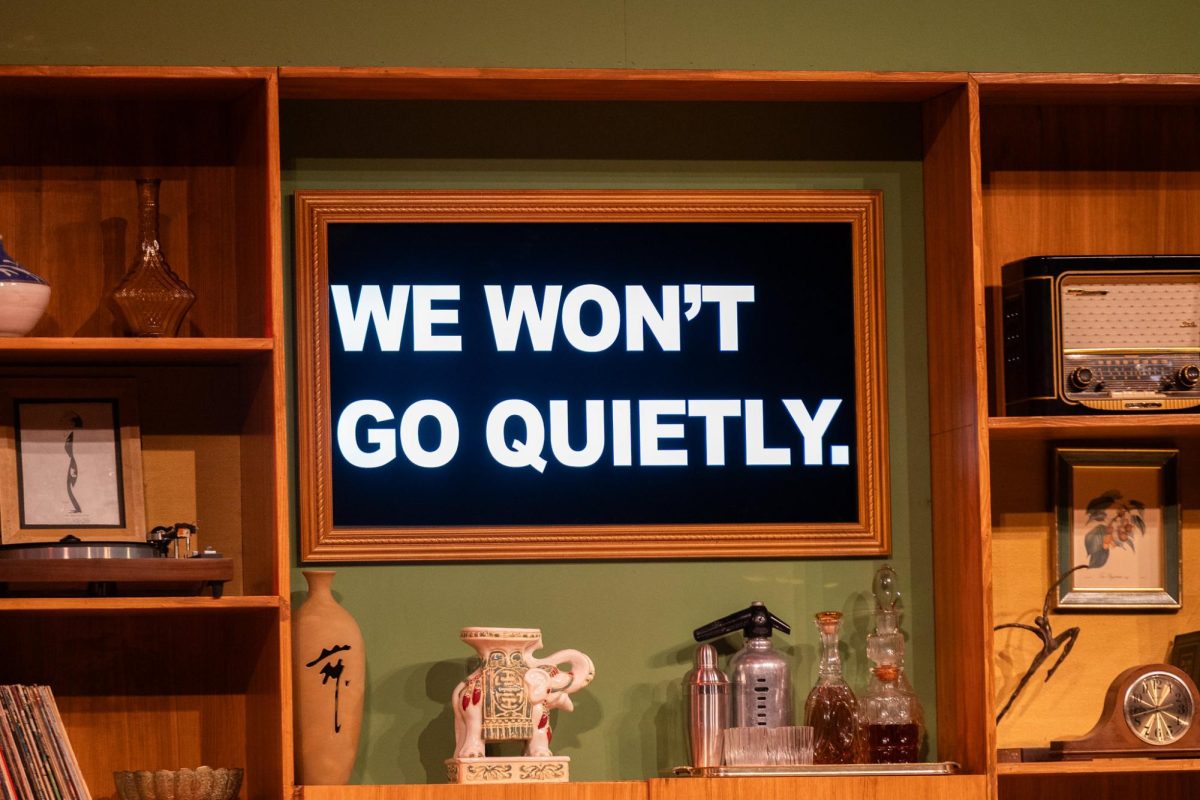“Where does one look?”
This question is sure to be asked by any person watching Sonoma State’s latest show. “The Orchard Development” is a unique combination of technology, acting and dancing based on Anton Chekhov’s “The Cherry Orchard.”
While on paper this idea may seem bold and daring, but in reality, this mixture may be the show’s weakest aspect. As each of these three elements collide on stage, the audience may struggle with which group deserves their focus.
As a whole, “The Orchard Development” is a marvel to look at, the stage is beautifully painted with a fancy looking rug, the many television screens add a unique sense of style, the lights showcase the true splendor of each movement and the performers are dressed to the nines.
Yet, despite the show’s overall good looks, there is an inherent confusion as “The Orchard Development” struggles with true identity crisis.
While the actors play out a scene, they’re being filmed by crewmembers so their face is projected up on six separate screens on stage. This gives the audience a rare look at an actor’s face only seen in movies, and most of the actors rise to this challenge. A few times throughout the show an actor uses an iPhone to Facetime themselves onto the many screens, but there is a definite five-second lag where the voice and mouth don’t sync up.
It managed to pull this reviewer out of the show and wonder why such a distraction was even used. As the actors appear both on stage and on screen, the addition of dance heightens the uncertainty of where to look.
The modern dance itself is outstanding as each dancer is in tune with the rest of their company.
Each move is precise, provocative and overall impressive, as showcased in the upbeat dance number right after intermission.
Yet when added in with the actors and technology the stage becomes overwhelming and cluttered. The audience’s focus is pulled in every direction as each separate aspect begs for attention.
Rarely does one aspect complement the other, which is a true shame because separately each element is a true marvel.
The show is filled with marvelous moments only to be overshadowed by such confusion. The acting is one quality that shouldn’t be overlooked. The casting is superb and highlights each of the actor’s talent making most of the characters relatable.
The show’s true standout is Matthew Lindberg as the eccentric student Peter Tempke, who demands the audience’s attention in almost every scene he’s in. The emotional scene between Lyla Elmassian’s Lyubov Andrea and himself is the acting highlight within “The Orchard Development.”
These contained emotional moments are something this cast succeeds at; there is never a moment that is over-acted.
“The Orchard Development” is about the little moments or the one rare scene that the technology, dance and acting truly complement each other.
An example includes a scene where Elmassian gives a heartfelt monologue about her life woes while being filmed and supported by the talented dancer, Emma Higgins. This one moment is the show’s technical achievement.
“The Orchard Development” had many good ideas that just struggle to fit together. The audience may understand each element of the show after multiple viewings, but the lack on focus is “The Orchard Development’s” one downfall.
As each separate aspect works well on its own, the combination only adds on confusion that may leave the audience wondering: “Where does one look?”



































